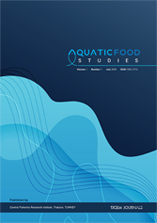Horticultural Studies (HortiS)
2019, Vol 36, Num, 1 (Pages: 88-98)
Evaluation of nutrition status of tomato (Solanum lycopersicum) greenhouse growing in Manavgat district
2 Akdeniz Üniversitesi Ziraat Fakültesi Toprak Bilimi ve Bitki Besleme Bölümü, Antalya DOI : 10.16882/derim.2019.476832 Viewed : 8471 - Downloaded : 2310 This study was carried out to determine the nutritional status of the tomato plants (Solanum lycopersicum) in greenhouse conditions in the Manavgat-Antalya district. For this purpose, soil samples were taken from 19 greenhouse plant samples and 2 different soil depths (0-20 cm and 20-40 cm). N, P, K, Ca, Mg, Fe, Zn, Mn and Cu in tomato plants and pH, electrical conductivity (EC), CaCO3, organic matter, texture, total N, P, K, Ca, Mg, Fe, Zn, Mn and Cu in soil samples were analyzed. According to tomato plant analysis; the contents of N were generally high levels while P contents were sufficient. The K contents were deficient; Ca and Mg contents were determined as sufficient. Fe contents were deficient, Zn and Cu contents ranged from poor to sufficient and Mn contents were sufficient in tomato plants. Results obtained showed that, soils of the greenhouses had a sandy clay loam, there was no salt problem and pH and CaCO3 contents were very high levels. Organic matter contents of soils were found to be low. Total N and P contents were found to be very rich while the extractable K levels were determined as insufficient. The levels of extractable Ca and Mg were generally sufficient. Most of the soil samples had sufficient amount of Fe, Zn, Mn and Cu. Due to lack of fertilization according to leaf and soil analysis in the area where intensive greenhouse production is carried out, nutrient deficiencies in plants are observed and this situation is expected to cause loss of yield in greenhouse production. Keywords : Manavgat; Tomato; Nutrient elements; Soil fertility














